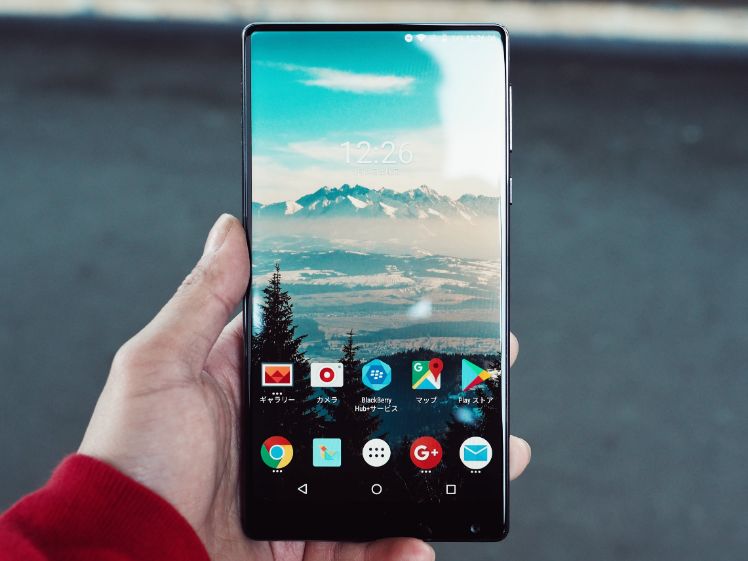The return on investment depends on the type of app business model it is used on.
The articulation of mobile applications is constantly evolving, therefore it is important to be clear about the different business models that already exist, which can design and carry forward a business strategy that best suits our technological product. It is critical to know what kind of business is going to apply this strategy as this method is directly related to the promotional strategy. Furthermore the return on invest varies on the type of investment made, it could either be long-term or short- term.
The freemium model, one of the most popular strategies, offers users basic functionality for free while charging for premium features.
Understanding an app’s value proposition is essential when selecting a business model. An app’s ability to satisfy a particular need or desire determines its potential for monetization. Developers may opt for a straightforward paid app model, where users pay a fee to download the app, or the freemium strategy, which can lead to higher download rates and the opportunity for ongoing revenue.
Today we find several lines of business, which can be broadly divided into two distinct groups. On the one hand there are models that require prior financial expenditure to access the download, however it is declining because they often create some dissatisfaction with their location. The reason being, mobile applications cannot be tested until you have purchased app, this means expectations may be higher than what it really is. On the other hand we come across applications that are completely free, although some of these mobile applications introduce payments that grants you access to other parts or services of the game.
12 App business models to increase your revenue

1. Brand
When it comes to app business models, a brand’s strength plays a crucial role in the app’s market success. A strong brand can differentiate an app in a crowded marketplace and foster user loyalty. Building a brand for an app involves developing a unique identity, which includes a memorable name, an attractive logo, and a consistent theme that resonates with the target audience.
Key Components of a Strong App Brand:
- Visual Identity: A cohesive design language with a recognizable logo and color scheme.
- Value Proposition: Clearly communicates the app’s benefits and why it’s better than the competition.
- Brand Voice: The tone and personality used across all communications.
Strategies for Enhancing App Brand Visibility:
- Social Media Engagement: Leveraging social platforms to build a community around the app.
- Influencer Partnerships: Collaborating with influencers to reach potential users.
- Consistent Messaging: Ensuring all marketing materials reflect the app’s brand values.
Brands must also be adaptable, as the expectations and needs of users evolve over time. Savvy developers will iterate their brand’s messaging and aesthetics to stay relevant and appealing. They should choose the right business model for the app, which complements their brand identity and appeals to their user base, whether it’s a freemium model that draws users in with no upfront cost or a paid model that promises a premium experience from the start.
A brand is not just a name or logo; it is the sum of all user interactions and experiences with the app. It influences user perception and ultimately contributes to the app’s retention rates and revenue generation. Developers must give the strategic development of their brand the attention it deserves.
2. Service Part
In many app business models, services play a crucial role. Apps that focus on service delivery prioritize customer interaction, offering support and functionalities that cater to specific user needs. A well-known approach is the service-oriented business model where services are typically accessible through an online platform, presenting options like web design, digital marketing, or customer support.
One variant is the ‘Freemium’ model, where an app offers basic services for free, with the option for users to upgrade to more advanced features. A classic example of this would be platforms like Zoom, which provides essential video calling services at no cost, and premium options for a fee.
On the other hand, the ‘Product-As-A-Service’ (PaaS) approach signals a shift from ownership to lease. Providing the functionality of a product through a subscription, it ensures users do not own the product but continually pay for its use and the services bundled with it, akin to models employed by companies like Circuly.
- Freemium:
- Basic services: Free
- Premium features: Paid
- Product-As-A-Service (PaaS):
- Ownership: None
- Subscription: Continuous payment
These service-focused models depend heavily on maintaining high levels of customer satisfaction and continuously evolving to meet customer demands. They encourage engagement and loyalty by offering tailored experiences.
3. Advertising
When it comes to mobile app business models, advertising is a prevalent option. It operates on the simple premise of providing app content free of charge while hosting third-party commercial advertisements. This model leverages a considerable user base to attract advertisers who are willing to pay for user attention.
Types of in-app advertisements include:
- Banner Ads: These are small advertisements typically positioned at the top or bottom of the screen. They are non-intrusive and allow users to freely interact with the app.
- Interstitial Ads: Full-screen ads that cover the interface of the app. They are displayed at natural transition points, like between levels in a game.
- Video Ads: Often used as rewards in games, these ads grant users something of value, such as in-game currency, for watching a short video.
- Native Ads: Seamlessly integrated into the app’s interface, these ads are designed to match the look and feel of the app, making them less disruptive.
Monetization efficiency is highly dependent on active users and engagement levels. The more frequently users interact with the app, the more ad impressions are generated, thereby increasing potential revenue. However, advertisers look at factors such as click-through rates (CTR) and user demographics to determine the value of advertising within an app.
Implementing an advertising business model also means considering user experience. Overwhelming users with ads can lead to frustration and app abandonment, so a balance must be struck. Apps with large amounts of users can see significant returns from ads, with revenue potentially ranging from $0.20 to $4.00 per 1000 impressions.
4. In-App Purchases
In-app purchases (IAPs) have become a crucial part of app monetization strategies. They allow users to buy virtual items or additional features within an app. There are several types of IAPs, each serving different user needs and business models:
- Consumables: These are items that can be used once, such as virtual currency or health points in games.
- Non-consumables: These include one-time purchase items that provide permanent benefits, like ad removal.
- Subscriptions: Users pay a recurring fee to access content or services for a set period.
A study noted that about 50% of non-game apps and 79% of game apps use IAPs. It is critical to match the type of IAP to the app’s target audience for it to be effective. For example, games often employ IAPs for users to progress or enhance gameplay, while productivity apps may offer subscriptions for advanced features.
The integration of IAPs should aim for a seamless user experience, where in-app purchases are tested throughout the development process. Proper handling of purchase scenarios, such as subscription offers or interrupted purchases, is essential to maintain user trust.
In-app purchases have demonstrated significant revenue potential. Users’ spending on IAPs is increasing, indicating their acceptance as a monetization model when well-aligned with the users’ expectations and the app’s value proposition.
5. Information
When developing a mobile application, one must choose an appropriate business model to ensure the app’s financial sustainability and market success. Business models for apps generally fall into several broad categories, each with specific monetization strategies.
- Free Apps: These apps are available at no cost to the user and rely on alternative revenue streams such as advertising or in-app purchases.
- Freemium Apps: They offer basic functionality for free, while charging for advanced features. This model incentivizes users to upgrade for a better experience.
- Paid Apps: Users are charged upfront to download these applications. They typically offer full functionality without additional in-app purchases.
Selecting the right business model is influenced by user expectations and market research. It is crucial to understand one’s target audience and their willingness to pay for the app’s services. Models should align with the core value proposition of the app to provide a seamless user experience.
For instance, the freemium model is often used by apps that want to attract users by offering value for free initially, then converting them into paying customers for more advanced features.
An application’s revenue model is directly tied to its long-term success and scalability. Thus, developers should evaluate the market, understand their audience, and decide on a business model early in the app design process, as noted by Apple on their Business Models and Monetization page. The model chosen should balance the goals of the developer with the expectations and behaviors of the target market.
6. E-Commerce
In the landscape of app business models, e-commerce stands out as a critical avenue for sales and marketing. This model primarily revolves around the online buying and selling of goods and services. E-commerce operates on several key models, which include:
- Business to Consumer (B2C): Here, businesses sell directly to individual consumers, such as purchasing a shirt from a brand’s website.
- Business to Business (B2B): Transactions occur between two businesses, often involving bulk orders or services.
- Consumer to Consumer (C2C): Platforms like eBay or Etsy facilitate sales between individuals.
- Consumer to Business (C2B): Individuals offer products or services to companies, such as stock photography or freelance work.
Additionally, e-commerce apps often employ innovative strategies, such as:
- White Labeling: A company sells a generic product, which the purchaser then brands and sells as their own.
- Private Labeling: Similar to white labeling, but with exclusive selling rights.
Merchants must select the e-commerce model that aligns best with their business goals. The broad accessibility of e-commerce enables businesses to reach a global market with relatively low overhead, leveraging technologies that provide seamless user experiences, secure transactions, and sophisticated data analysis.
Businesses integrate white label apps and services to maintain consistency with their brand image. E-commerce is adaptable, allowing for growth and changes within the market and consumer trends. Entities need to choose the most suitable model to thrive in the ever-expanding digital marketplace.
7. Hearings
In the context of mobile applications, “Hearings” may refer to the use of apps as assistive hearing tools. These apps often complement or enhance the functionality of hearing aids.
Types of Hearing Apps:
- Assistive Listening: They amplify sounds from the environment.
- Hearing Test Apps: Users can assess their hearing abilities.
- Tinnitus Relief: Offer sounds designed to mask tinnitus symptoms.
Key Features:
- Compatibility: They must work with various hearing aid models.
- Wireless Connectivity: Many use Bluetooth to connect with devices.
- Customization: Users can adjust settings like volume and frequencies.
Monetization Strategies:
- Freemium: Basic features are free, with a charge for premium functionalities.
- Advertisements: Apps show relevant ads to users.
- Subscription: Regular payments for full app access.
Developers must consider user experience and the sensitive nature of assistive apps to ensure they provide genuine value while also creating a sustainable business model. Finding the balance between usability and profitability is crucial to their success and users’ satisfaction.
8. Affiliation
In the landscape of app business models, Affiliation stands out as a strategy built on partnership and mutual benefit. At its core, affiliation involves an app company joining forces with affiliates—entities or individuals—to promote its offerings. In return, affiliates receive a commission for each sale or referral made through their marketing efforts.
This model is particularly attractive due to its performance-based nature, which ensures that affiliates are compensated proportionally to the value they bring. It’s a powerful way for apps to expand reach and drive sales without incurring upfront advertising costs.
Key Elements:
- Partnerships: Establish relationships with affiliates to promote your app.
- Commission-Based Revenue: Compensation tied directly to conversions.
Affiliation harnesses a diverse range of marketing methods, including SEO, content marketing, or social media. This multifaceted approach not only diversifies the app’s presence but also appeals to the respective strengths of each affiliate.
For the affiliates, the allure of the affiliation model is the low barrier to entry and the potential for a steady income stream, particularly for those with established audiences or marketing skills. The process is typically facilitated by affiliate programs that connect merchants and affiliates, providing a structured framework for collaboration and payment.
Companies must ensure careful selection and management of affiliates to align with their brand and maintain quality control over marketing activities. Trust and transparency between both parties fortify the relationships, ensuring long-term success of the affiliation model.
9. Subscriptions
In the realm of app business models, subscription models stand as a cornerstone for developers aiming to generate a stable revenue flow. A subscription model typically involves users paying a periodic fee—monthly, quarterly, or annually—to gain continuous access to an app’s content or services.
Distinct benefits of subscription models include:
- Predictable Income: Regular payments provide a foreseeable and steady income stream.
- Customer Loyalty: They foster closer relationships with users by offering ongoing value.
- Enhanced Engagement: Users are more likely to engage regularly with the service to maximize their subscription’s value.
Key components to consider when implementing a subscription model are:
- Value Proposition: Clear articulation of the benefits for the users.
- Pricing Strategy: Careful consideration for affordability and competitiveness.
- Free Trial Periods: Opportunities for users to test the service before committing financially.
- Simplicity in Subscription Management: Easy processes for users to sign up, modify, or cancel their subscriptions.
Developers also need to choose the right platform and tools to support their subscription service. This is a crucial step in ensuring a seamless user experience and can include aspects like secure payment gateways, analytics for tracking user engagement, and customer support systems.
The subscription-based app model has seen widespread adoption across various industries, due to its dynamic and versatile nature. Apps that offer subscriptions range from productivity and education platforms to entertainment and fitness services.
10. Low Priced
A low priced business model in the mobile app industry is one where apps are offered at a minimal cost to the user. Generally, these apps fall within a price range that users perceive as a low-risk financial commitment. The strategy behind this model is to attract a larger volume of users by setting a price point that is just high enough to generate revenue but low enough to encourage impulse purchases.
Advantages:
- Larger potential user base due to affordable pricing.
- Immediate revenue with each download.
- Reduced reliance on in-app purchases or advertising for monetization.
Disadvantages:
- Requires a high volume of sales to achieve significant profit.
- Users may expect regular updates and support without additional cost.
When an app opts for the low priced model, they often do so with the intention of securing a spot in the competitive app market by offering tangible value for a nominal fee. The modest price tag helps to minimize the barriers to entry for users who are cautious about spending money on untested apps.
The success of this model may depend on factors such as the app’s quality, its market demand, and the effectiveness of its marketing strategies. It is not uncommon for developers to initially launch an app with a low price strategy to establish a user base before pivoting to other monetization models, such as in-app purchases or premium features.
It’s important for developers to understand their cost structure and the volume of sales needed to break even or make a profit when employing a low priced business model. They must also consider the lifetime value of a customer, as a larger user base at a lower price point may lead to substantial profits over time if additional monetization strategies are effectively implemented.
11. High Price
When apps are positioned with a high price point, developers usually aim to signal premium value to potential customers. High pricing may leverage the psychological association that consumers often make: higher cost equals higher quality.
One of the models utilizing high price is the paymium strategy. Here’s an example of how it functions:
- Initial Purchase: Consumers pay a one-time fee to download the app.
- Additional Features: Users may encounter in-app purchases for premium content or functionalities.
A high price model can indeed be quite effective in certain markets, especially when an app offers distinctive features or content that justifies the expense. Kingdom Rush Origins HD and Bloons TD 6 are examples of paymium apps that have found success.
| Pros of High Price Model | Cons of High Price Model |
|---|---|
| – Implies premium quality | – Can deter price-sensitive users |
| – Higher initial revenue per user | – Requires significant market differentiation |
| – Can create a sense of exclusivity | – Risk of high customer expectations |
For app developers, it is crucial to justify the high price with exceptional user experience, robust features, and reliable support. They should also consider the potential impact on the app’s marketability and competitive stance. To sustain a high price model, an app needs to maintain high standards and offer continual improvements or updates.
12. Without A Clear Business Model
Creating a mobile application presents a range of challenges, one of which is determining the most sustainable and profitable way to operate.
Significance: Without a clear business model, an app is at significant risk of failing to monetize effectively, regardless of its user interface design or functionality.
Consequences: Developers may find that:
- User Retention: As users are not fully aware of the value proposition, they may not stick around long-term.
- Revenue Streams: Identifying and capturing consistent revenue streams becomes challenging.
- Investor Interest: Potential investors may be hesitant to fund an app without a solid business model, due to the uncertainty in returns.
Strategies Often Overlooked:
- Freemium Models: Offer a free, basic version of the app with optional premium features that add value.
- Subscriptions: A repeat revenue stream that makes predictable income from users who value ongoing content or services.
- Advertisements: Carefully integrated ads that relate to user preferences can create income without disrupting the user experience.
In conclusion, an app developer must understand that without a clear and focused business model, the path to profitability and sustainability remains uncertain.
App Business Model Frequently Asked Questions
In this section, readers will find concise answers to some common inquiries regarding app business models, elaborating on revenue generation, program influence, and categorization by profitability.
What are the common revenue models for free apps?
Free apps often rely on revenue models such as advertising, in-app purchases, sponsorship, and freemium models where the basic functionality is free but advanced features require payment. The freemium model is particularly noted for its effectiveness and scalability, allowing for a broad user base while encouraging upgrades for enhanced experiences.
How does the App Store Small Business Program influence an app’s business model?
The App Store Small Business Program reduces the commission on app sales and in-app purchases for eligible businesses, which can significantly impact the business models by increasing the profit margins for smaller app developers. This can make premium models and subscription services more feasible for smaller players.
In what ways can an app-based business generate profit?
App-based businesses can generate profit through several avenues including direct sales, subscription services, ad revenues, sponsorships, affiliate marketing, and providing premium features. Each approach requires different marketing strategies and user engagement tactics to be successful.
Which category of apps tends to generate the highest income?
The most profitable app categories often include gaming, dating, and streaming services. These categories benefit from robust user engagement and the potential for recurrent revenue through subscriptions and in-app purchases.
How do various business models impact an app’s profitability?
App profitability is closely tied to the chosen business model, which should align with the target audience’s preferences and willingness to pay. Freemium apps might attract a large user base, while subscription models can ensure a steady income. A business model must be adaptable to market changes to maintain profitability.
What are best practices for designing a business model canvas for an app?
When designing a business model canvas for an app, developers should identify and understand their key value propositions, customer segments, and revenue streams. It’s also essential to consider cost structures and partner networks which can provide operational support and additional resources.







